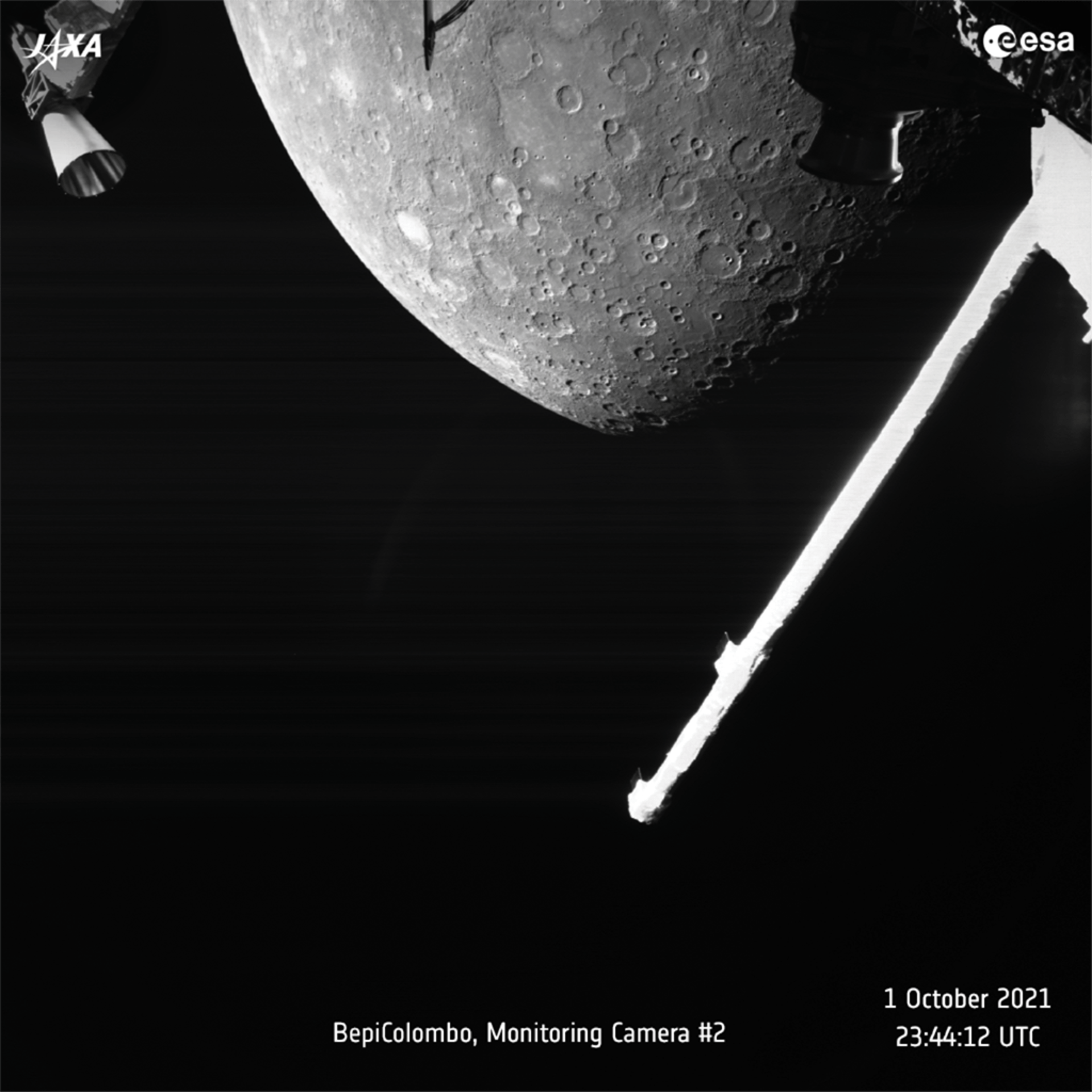The European probe Bepicolombo flew past Mercury just after midnight on Saturday morning. The European Space Agency (EPA) announced the news on October 2 in a press release. After the flyby, Bepicolombo continued to fly, but the plan is to return the probe several times before putting it into orbit around the planet.
The spacecraft was launched in October 2018 and is the result of a collaboration between the European and Japanese space agencies. After the flyby, the spacecraft continues to fly through the solar system. It is intended that the probe five more flybys Mercury will do, after which it should eventually enter orbit around the planet in 2025. These maneuvers are performed so that the probe can safely establish itself in orbit around Mercury.
Although this is Mercury’s first flyby, Bepicolombo has previously made one flyby to Earth and two to Venus. Mercury’s last flyby is not scheduled until January 2025. After that, the probe will enter orbit around Mercury in December of the same year.
We might have been late with the first image, but we’re early with the follow-up ???? Here are a few more incredible first impressions from our first #MercuryFlyby – plus annotations to guide the eye!https://t.co/8RpPeJVBDM#ExploreFarther pic.twitter.com/KkF2wF2vVp
— BepiColombo (@BepiColombo) October 2, 2021
Until a few years ago, Mercury was labeled as uninteresting by scientists. However, after it turned out that there was water ice on the planet, astrophysicists decided there was something to learn from the planet. With the launch of Bepicolombo, the ESA aims to clear up some of the mysteries surrounding the smallest planet. That is by the way no more Plutoto the chagrin of many.
The biggest question about Mercury is how the planet came to be. After all, the planet orbits the sun three times closer than the Earth. But Mercury’s chemical make-up does not match with a planet so close to the sun. According to scientists, Mercury’s composition is most similar to Mars, which is impossible according to current models of the formation of the solar system. Scientists are now trying to find out if the planet originated much further, after which it later migrated to its current distance.
Clash of the Titans
Another great mystery surrounding Mercury is its gigantic core. Although the planet is only 5,000 kilometers in diameter, its core is 4,000 kilometers in diameter. For comparison, the Earth only has a core with a diameter of 1,200 kilometers, while the diameter of the Earth is 12,700 kilometers. According to Johannes Benkhoff, one of the scientists who helped develop Bepicolombo, a possible explanation could be that Mercury collided with another planet in its past. In doing so, a large part of Mercury’s mass would have been lost.
According to some scientists, the planet Mercury once collided with may be Earth itself. Our moon would later have formed from the debris of that collision. They assume here that Mercury is the mysterious planet Theia would be. Most scientists now agree that the moon formed after a protoplanet named Theia hit Earth 4.5 billion years ago. However, there is no proof yet that Mercury and Theia are the same planet.
Water and fire
The ESA also wants to investigate whether there is actually water ice on the planet. Temperatures on Mercury can reach as high as 450 degrees Celsius. Scientists were therefore surprised when, a few years ago, they water ice detected on the planet. Some craters on Mercury are said to be deep enough never to be exposed to sunlight, keeping temperatures extremely low.
Bepicolombo will also investigate whether Mercury is geologically active, dead or not. Scientists will also investigate why the planet is darker than it should be. Finally, they also want to find out why the small planet has a magnetic field.
View the summary of Bepicolombo’s objectives below
–


